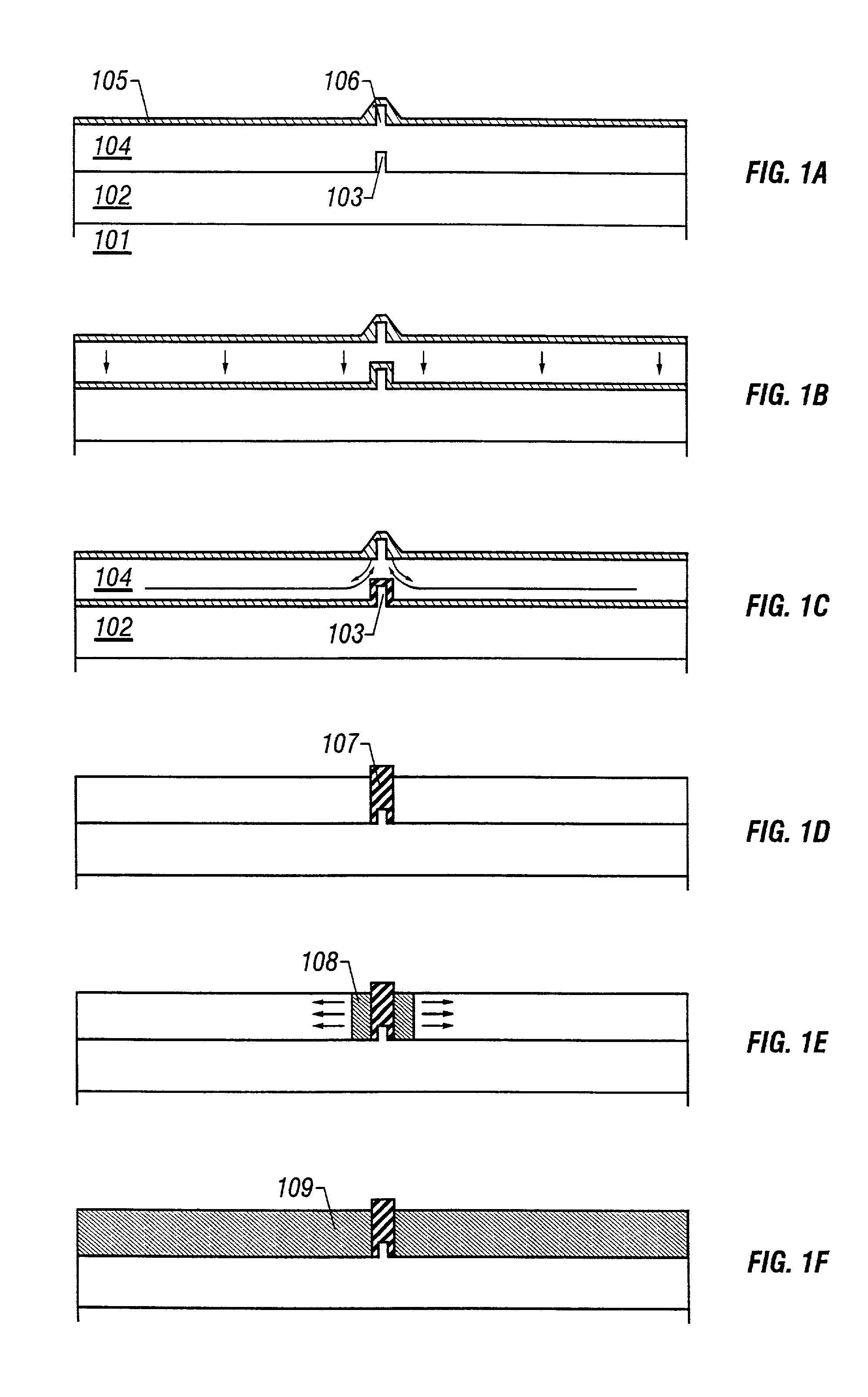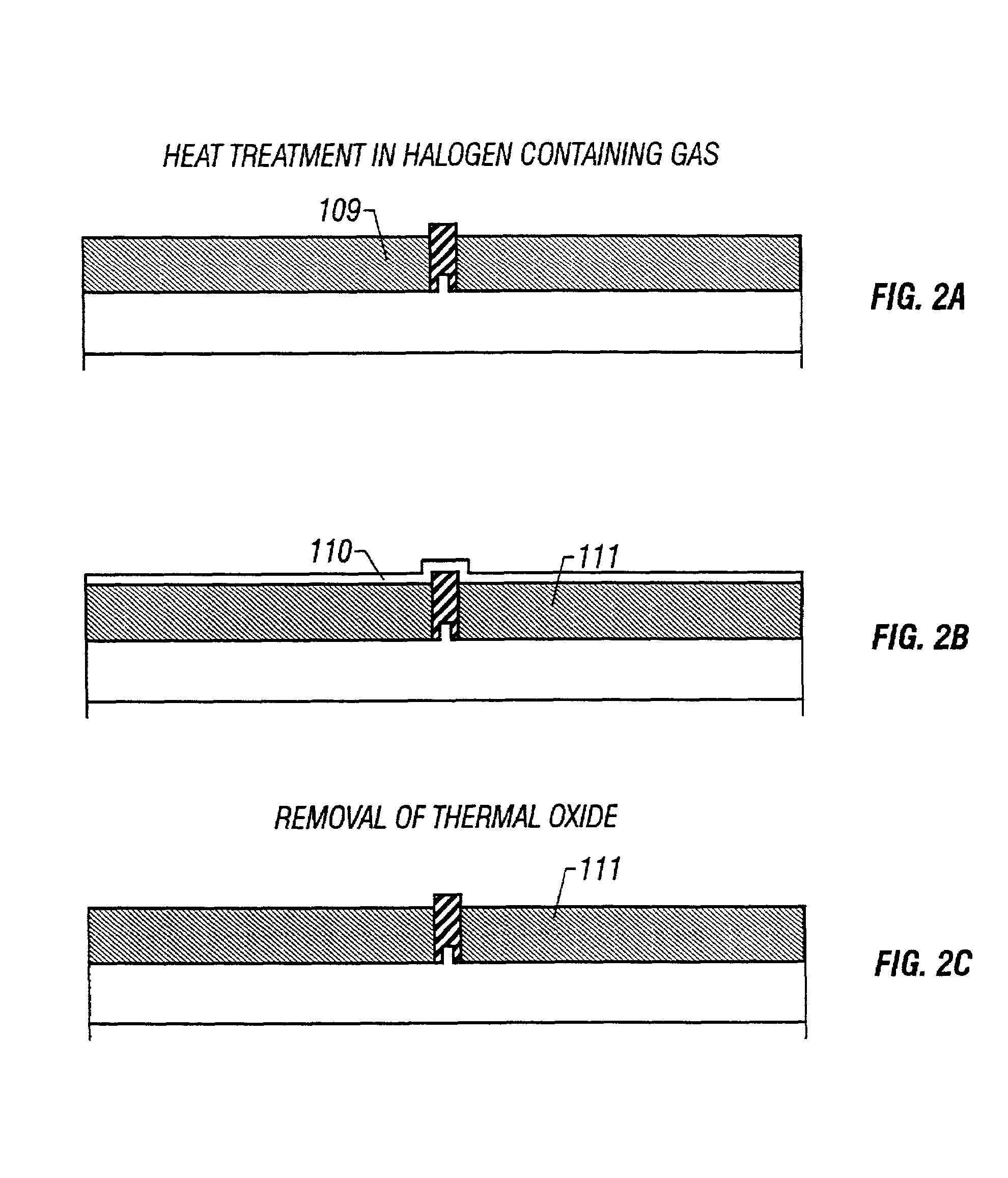Semiconductor thin film, semiconductor device and manufacturing method thereof
a technology of semiconductor devices and thin films, applied in non-linear optics, instruments, optics, etc., can solve the problems of insufficient crystallinity of tft active layers for processor circuits or memory circuitry, inability to provide tft active layers, and inability to catch up to strict demands, etc., to achieve enhanced density, reduce the number of possible crystal grain boundaries, and improve the effect of smoothness
- Summary
- Abstract
- Description
- Claims
- Application Information
AI Technical Summary
Benefits of technology
Problems solved by technology
Method used
Image
Examples
example 1
[0058]A fabrication method of a “mono-domain” region which is a key to the invention will be fully described with reference to FIGS. 1A to 1F. See FIG. 1A. This is a diagrammatic depiction (not drawn to scale) of a substrate 101 having an insulating or dielectric surface. The substrate 101 is made of a material of enhanced heat resistance, such as quartz, silicon or the like. As shown, a silicon oxide film 102 is formed by sputtering techniques on substrate 101 with an artificial quartz being as the target. The silicon oxide film 102 exhibits an increased flatness and smoothness on its top surface; for example, any possible surface configuration of film 102 measures 3 nanometers (nm) or less in height and 10 nm or greater in width. This surface configuration will be difficult or nearly impossible to be visually recognized even by use of atomic force microscopy (AFM) measurement schemes.
[0059]After formation of the extra flat silicon oxide film 102, resultant structure is then subjec...
example 2
[0086]A manufacturing method of a TFT structure utilizing the mono-domain of Example 1 is shown in FIGS. 4A to 4E. While this illustrative embodiment will be described herein in connection with a top-gate TFT structure, the invention should not exclusively be limited thereto. One skilled in the art will readily recognize that the method of FIGS. 4A to 4E may alternatively be applicable to formation of a bottom-gate TFT with the gate electrode being replaced by the one which is high in heat resistance.
[0087]As shown in FIG. 4A, a quartz substrate 401 with a silicon oxide film 402 and a “pseudo single-crystalline” mono-domain silicon film 403 being laminated on the surface of substrate 401 in this order. Note that the films 402, 403 may be fabricated using the method shown in FIGS. 1A–1F and 2A–2C. The silicon film 303 has therein a mono-domain region as described previously. Film 403 is patterned by patterning techniques as shown in FIG. 4A. This patterned film 403 will be later used...
example 3
[0098]An explanation will now be given of a significant advantage of the thermal oxidation process in the atmosphere containing halogen elements for formation of the mono-domain region as has been discussed previously in Example 1.
[0099]See FIG. 6. This diagram is a graph showing the relation of vapor pressure of nickel chloride (NiCl2) versus temperature. As shown, since NiCl2 is a sublimative material, Ni in the mono-domain crystalline silicon film 111 of FIG. 2C may exhibit sublimation in nature as soon as it is gettered by chlorine. Resultant nickel chloride compounds will be released from the crystalline silicon film by outdiffusing into the air or by being absorbed by its overlying thermal oxide film. This advantageously serves to enable successful removal of Ni from the silicon film.
[0100]Electrical characteristics of the TFT structure of FIG. 4E will be described with reference to FIG. 5, which demonstrates the relation of gate current (Vg) versus drain voltage (Id) of the T...
PUM
| Property | Measurement | Unit |
|---|---|---|
| temperature | aaaaa | aaaaa |
| temperature | aaaaa | aaaaa |
| height | aaaaa | aaaaa |
Abstract
Description
Claims
Application Information
 Login to View More
Login to View More - R&D
- Intellectual Property
- Life Sciences
- Materials
- Tech Scout
- Unparalleled Data Quality
- Higher Quality Content
- 60% Fewer Hallucinations
Browse by: Latest US Patents, China's latest patents, Technical Efficacy Thesaurus, Application Domain, Technology Topic, Popular Technical Reports.
© 2025 PatSnap. All rights reserved.Legal|Privacy policy|Modern Slavery Act Transparency Statement|Sitemap|About US| Contact US: help@patsnap.com



